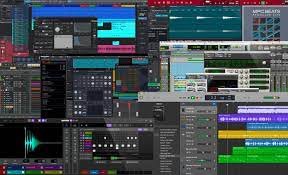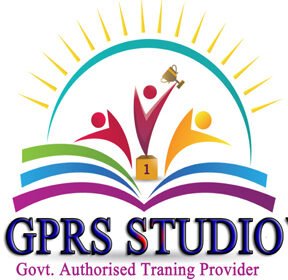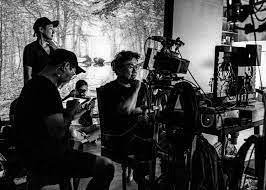Music Programmer free of cost 6 month
Music Programmer free of cost 6 month

Brief Job Description: The role of the Music programmer is to operate Digital Audio Workstations (DAW), music synthesizers, samplers and sound modules to program and sequence music according to the creative and musical requirements set by the music producer.
Personal Attributes: A Music Programmer must be able to work independently with very little supervision, and must have the ability to plan and execute his/her work efficiently. The person must be reliable and must demonstrate commitment to improve work output based on feedback from various sources. The role requires excellent collaborative abilities, and also some supervisory skills to guide and mentor assistant programmers while working on large music projects. Theindividual should also have the drive to constantly improve his/her domain expertise to stay relevant to the rapidly changing trends in the music industry.
| Qualifications Pack Code | MES/Q 1503 | ||
| Job Role | Music Programmer | ||
| Credits (NSQF) | TBD | Version number | 1.0 |
| Sector | Media and Entertainment | Drafted on | 13/09/2018 |
| Sub-sector | Film, Television, Music, Radio, Animation, Gaming, Advertising | Last reviewed on | 11/03/2019 |
| Occupation | Music Production | Next review date | 10/03/2022 |
| NSQC Clearance on | 22/08/2019 |
| Job Role | Music Programmer |
| Role Description | The role of the Music programmer is to operate Digital Audio Workstations (DAW), music synthesizers, samplers and sound modules to program and sequence music according to the creative and musical requirements set by the music producer. |
| NSQF level | 5 |
| Minimum Educational Qualifications Maximum Educational Qualifications | Class XII NA |
| Prerequisite License or Training | Performance skills on any musical instrument. Familiarity with basic western and Indian music theory. |
| Minimum Job Entry Age | 18 years |
| Experience | 1-2 years experience in sequencing music using any of the commonly used Digital Audio Workstations. |
| Applicable National Occupational Standards (NOS) | |
| Performance Criteria | As described in the relevant OS units |
| Keywords /Terms | Description |
| Sector | Sector is a conglomeration of different business operations having similar businesses and interests. It may also be defined as a distinct subset of the economy whose components share similar characteristics and interests. |
| Sub-sector | Sub-sector is derived from a further breakdown based on the characteristics and interests of its components. |
| Occupation | Occupation is a set of job roles, which perform similar / related set of functions in an industry. |
| Job role | Job role defines a unique set of functions that together form a unique employment opportunity in an organisation. |
| Occupational Standards(OS) | OS specify the standards of performance an individual must achieve when carrying out a function in the workplace, together with the knowledge and understanding they need to meet that standard consistently. Occupational Standards are applicable both in the Indian and global contexts. |
| Performance Criteria | Performance criteria are statements that together specify the standard of performance required when carrying out a task. |
| National Occupational Standards (NOS) | NOS are occupational standards which apply uniquely in the Indian context. |
| Qualifications Pack (QP) | QP comprises the set of OSs, together with the educational, training and other criteria required to perform a job role. A QP is assigned a unique qualifications pack code. |
| Description | Description gives a short summary of the unit content. This would be helpful to anyone searching on a database to verify that this is the appropriate OS they are looking for. |
| Scope | Scope is a set of statements specifying the range of variables that an individual may have to deal within carrying out the function which have a critical impact on quality of performance required. |
| Knowledge and Understanding | Knowledge and understanding are statements which together specify the technical, generic, professional and organizational specific knowledge that an individual need to perform to the required standard. |
| Organisational Context | Organisational context includes the way the organization is structured and how it operates, including the extent of operative knowledge managers have of their relevant areas of responsibility. |
| Technical Knowledge | Technical knowledge is the specific knowledge needed to accomplish specific designated responsibilities. |
| Core Skills/Generic Skills | Core skills or generic skills area group of skills that are the key to learning and working in today’s world. These skills are typically needed in any work environment in today’s world. In the context of the OS, these include communication related skills that are applicable to most job roles. |
| Budget | Budget is an estimate of the total cost of production that may include a break-up of cost components. |
| Copyright Laws | A legal framework linked to intellectual property and the rights given to creators of original products/ concepts. |

| Creative Brief | Creative brief is a document that captures the key questions that serve as a guide for the music arrangement including the vision, objective of the project, target audience, timelines, budgets, milestones, stakeholders etc. |
| Music concept | Music concept is a description of the overall musical experience for the production / composition |
| Script | Script is a structured narrative of a story and or the spoken word/ narrative that accompanies a programme. |
| Arranging | The process of structuring music harmonies and rhythmic elements for an existing composition (melody, theme, etc.) using various instrumentation and adhering to the stylistic characteristics of a music genre. |
| Acoustics | Acoustics is the science that studies the properties of sound, transmission of sound in different medium, and the properties or qualities of a room or building that determine how sound is transmitted in it. |
| Music Score | Is a document that contains written music notation of compositions, lyrics, and performance parameters that musicians use. |
| DAW | Digital Audio Workstation is a computer based system used for composing, arranging, sequencing and producing music and audio. |
| Target Audience | Group of people at whom content/ adverting is aimed. A target audience is typically defined by age, gender, economic classification, geography and any other relevant parameters. |
| Timelines | Timelines is a listing of dates by which the production milestones/stages need to be completed. |
| Vertical | Vertical may exist within a sub-sector representing different domain areas or the client industries served by the industry. |
| Keywords/Terms | Description |
| NOS | National Occupational Standard(s) |
| QP | Qualifications Pack |
| NSQF | National Skill Qualifications Framework |
| NVEQF | National Vocational Education Qualifications Framework |
| NVQF | National Vocational Qualifications Framework |
| Unit Code | MES/N1508 |
| Unit Title (Task) | Operate Digital Audio Workstations (DAW) |
| Description | This OS unit covers the skills required to setup and operate Digital Audio Workstations (DAW) to program music. |
| Scope | This unit/task covers the following: Prepare the Digital Audio Workstation (DAW) for music programming.Recording sounds in a DAW.Use software and external devices with a DAW to program music. |
| Performance Criteria (PC) w.r.t. the Scope | |
| Element | Performance Criteria |
| Prepare the Digital Audio Workstation (DAW) for music programming | To be competent, the user/individual on the job must be able to: PC1. interpret music and stylistic requirements of the production from the music brief. PC2. prepare music programming templates and supervise the setup of sessions in the DAW according to music programming requirements. PC3. supervise the setup and configuration of audio interfaces, Musical Instrument Digital Interface (MIDI) controllers, sound modules and processors to program music. PC4. use correct technical, musical and production terminologies (e.g. samples rate, buffer size, I/O devices, form, etc.) to communicate music programming requirements to the team. |
| Recording sounds in a DAW | PC5. supervise the recording of instruments and vocals while monitoring input and output levels within the DAW. PC6. demonstrate familiarity with the basic principles of acoustics, and competency in microphone placement to record sounds. |
| Use software and external devices with a DAW to program music | PC7. load, configure and use suitable virtual instruments in a DAW in accordance to the music programming requirements. PC8. use external sound libraries and plug-ins while working within a DAW to program music. PC9. supervise the linking of external MIDI controllers to the DAW and to specific virtual instrument controls for programming music. PC10. work using MIDI protocol (MIDI channels, velocity, programming tools) within a DAW to program music. |
Music Programmer free of cost 6 month
| Knowledge and Understanding (K) | |
| A. Organizational Context (Knowledge of the company / organization and its processes) | The user/individual on the job needs to know and understand: KA1. how to prepare for and contribute to pre-production processes and meetings with music producers and composers. KA2. the DAW resources available, and how these may be used to meet the expectations laid out in the production brief. KA3. the role and function of each member of the music programming team. KA4. how to prepare reasonably accurate man-hour estimates based on music programming tasks planned for each job. |
| B. Technical Knowledge | The user/individual on the job needs to know and understand: KB1. the technical parameters and settings of the DAW required for various music programming scenarios and templates. KB2. digital audio and MIDI signal flow between DAW, computer and external devices. KB3. how to set-up and connect all the devices needed for programming music (different types of cables, external MIDI controllers, phantom power, input/output circuit, etc.) KB4. the operational and technical limitations of music programming systems being used (e.g. latency, Digital Signal Processing (DSP) resources, Random Access Memory (RAM)/Central Processing Unit (CPU) usage, buffer size) KB5. how to work with the different formats of virtual instruments and software plugins KB6. the various DAW and music notation file formats and their compatibility structure. KB7. the physical properties of sound and the digital tools and parameters used to manipulate the behaviour of sound. |
| Skills (S) | |
| A. Core Skills | Writing Skills |
| The user/individual on the job needs to know and understand how to: SA1. take notes (including basic music notation) during discussions with the music producer to aid the preparation and setup of the DAW. SA2. label DAW sessions, tracks, busses, takes, and bounces accurately. | |
| Reading Skills | |
| The user/individual on the job needs to know and understand how to: SA3. read and translate music programming requirements and guidelines to practical work setup within the DAW. |
| SA4. read basic music notation and input that information into a music sequencer. SA5. read and interpret user guides and manuals of DAW, software instruments, MIDI equipment, etc. | |
| Oral Communication (Listening and Speaking skills) | |
| The user/individual on the job needs to know and understand how to: SA6. communicate ideas, suggestions and issues clearly using appropriate terminologies within a collaborative environment. SA7. present/solicit feedback on work and identify modifications required. | |
| B. Professional Skills | Plan and Organize |
| The user/individual on the job needs to know and understand how to: SB1. plan music programming templates, file organisation structure, and work timelines in order to meet agreed deliverables. | |
| Analytical Thinking | |
| The user/individual on the job needs to know and understand how to: SB2. break down complex music programming tasks into manageable components within the DAW workflow. | |
| Problem Solving | |
| The user/individual on the job needs to know and understand how to: SB3. guide the team using methodical approaches to identify and resolve technical and creative challenges in programming music. | |
| Critical Thinking | |
| The user/individual on the job needs to know and understand how to: SB4. evaluate the quality of programmed music material using established criteria and make improvements where required. | |
| Decision Making | |
| The user/individual on the job needs to know and understand how to: SB5. make appropriate choices of DAW workflow, virtual instruments, sounds, etc. to meet music programming requirements. | |
| Customer Centricity | |
| The user/individual on the job needs to know and understand how to: SB6. review work of self and team at every stage to ensure that they fully meet the requirements laid out by the music producer. |
NOS Version Control
| NOS Code | MES/N1508 | ||
| Credits (NSQF) | TBD | Version number | 1.0 |
| Industry | Media & Entertainment | Drafted on | 13/09/2018 |
| Sub-sector | Film, Television, Music, Radio, Animation, Gaming, Advertising | Last reviewed on | 11/03/2019 |
| Occupation | Music Production | Next review date | 10/03/2022 |
| Unit Code | MES/N1509 |
| Unit Title (Task) | Sample and synthesise sounds |
| Description | This unit covers the skills required to program music using music samplers and sampling techniques, and manipulate different parameters of synthesisers to create and/or recreate original sounds. |
| Scope | This unit/task covers the following: Use of music samplers and sampling techniques.Use of music synthesisers and application of synthesis techniques.Application of sound design techniques in a DAW. |
| Performance Criteria (PC) w.r.t. the Scope | |
| Element | Performance Criteria |
| Use of music samplers and sampling techniques | To be competent, the user/individual on the job must be able to: PC1. operate music samplers to program music. PC2. create original music samples (recording sounds or re-sampling existing audio material) according to music programming requirements. PC3. control and manipulate envelope parameters (Attack, Decay, Sustain, Release) and filters to shape sounds creatively. PC4. execute pitch and time stretching of sampled sounds to meet music programming requirements. |
| Use of music synthesisers and application of synthesis techniques | PC5. operate synthesizers efficiently to create different types of musical sounds (pads, lead, bass, pluck, etc.) to program music. PC6. supervise the shaping of original sounds using various synthesis techniques. |
| Application of sound design techniques in a DAW | PC7. use techniques such as automation, panning, glitching, reversal, etc. to design sounds using a DAW. PC8. apply equalization, reverb, delay and compression techniques to shape sounds according to music programming requirements. PC9. supervise the manipulation of MIDI and audio files within samplers and synthesisers. PC10. supervise the layering of different types of sounds to create new textures and timbres. |

| Knowledge and Understanding (K) | |
| A. Organizational Context (Knowledge of the company / organization and its processes) | The user/individual on the job needs to know and understand: KA1. timelines and budgets available for sampling and synthesising original sounds for music programming. KA2. Intellectual Property Rights, copyright, and fair use policies applicable to the organisation’s business. KA3. how to organize, label, structure and save music material (samples, recordings, synthesized sounds), original sound pre-sets and sound libraries in an easily retrievable manner according to standard operating procedures. |
| B. Technical Knowledge | The user/individual on the job needs to know and understand: KB1. principles of musical instrument acoustics to aid efficient sampling and creation/recreation of instrument sounds. KB2. the technical parameters and operational settings of digital music samplers and their functions in sampling original sounds. KB3. the technical parameters and operational settings of synthesisers (oscillators, envelope and filters) and their functions in the creation of original sounds. KB4. the technical parameters and settings of basic sound processors (Reverb, delay, compression and EQ). KB5. terminologies associated with digital sampling and synthesis (threshold, ADSR, high/low pass filter, transients, etc.). KB6. the principles of time and pitch stretching of sound. KB7. the operational and technical limitations of sampling and music synthesis systems being used (e.g. latency, DSP resources, RAM/CPU usage, buffer size). |
| Skills (S) | |
| A. Core Skills/ Generic Skills | Writing Skills |
| The user/individual on the job needs to know and understand how to: SA1. make accurate notes during discussions with the music producer to aid efficient sampling and synthesis of music. SA2. label and catalogue samples, pre-sets and sound libraries accurately and in an easily retrievable (standardized) manner. SA3. log sampling and synthesis sessions accurately for billing. | |
| Reading Skills | |
| The user/individual on the job needs to know and understand how to: SA4. read and translate music briefs and guidelines to practical work setup for sampling and synthesis of music. SA1. interpret user guides and manuals of samplers and synthesisers. |

| Oral Communication (Listening and Speaking skills) | |
| The user/individual on the job needs to know and understand how to: SA2. identify sampling and synthesis requirements in music programming during discussions with the music producer. SA3. communicate ideas, suggestions and issues clearly using correct terminologies associated with sampling and synthesis of music. SA4. present/solicit feedback on work and identify modifications required. | |
| B. Professional Skills | Plan and Organize |
| The user/individual on the job needs to know and understand how to: SB1. plan sampling and synthesis timelines to meet agreed work deliverables. SB2. plan file organisation structure to manage sounds created through sampling and synthesis efficiently. | |
| Analytical Thinking | |
| The user/individual on the job needs to know and understand how to: SB3. segregate the sampling and synthesis tasks required for the project into a manageable work breakdown structure for the team. | |
| Problem Solving | |
| The user/individual on the job needs to know and understand how to: SB4. guide the team with methodical approaches to identify and resolve any technical issues that arise during sampling and synthesis. | |
| Critical Thinking | |
| The user/individual on the job needs to know and understand how to: SB5. evaluate the quality of sampled and synthesised sounds using established criteria to ensure that they meet expectations. SB6. provide constructive feedback to the team for improvement when necessary. | |
| Decision Making | |
| The user/individual on the job needs to know and understand how to: SB7. make well informed and appropriate choices of sampling and synthesis techniques based on available resources. | |
| Customer Centricity | |
| The user/individual on the job needs to know and understand how to: SB8. ensure that sampling and synthesis of new sounds adhere fully to the creative and technical direction provided by the music producer. |
NOS Version Control
| NOS Code | MES/N1509 | ||
| Credits (NSQF) | TBD | Version number | 1.0 |
| Industry | Media & Entertainment | Drafted on | 13/09/2018 |
| Industry Sub-sector | Music, Film, Television, Radio, Animation, Gaming, Advertising | Last reviewed on | 11/03/2019 |
| Occupation | Music Production | Next review date | 10/03/2022 |
NOS Version Control
| NOS Code | MES/N1510 | ||
| Credits (NSQF) | TBD | Version number | 1.0 |
| Industry | Media & Entertainment | Drafted on | 13/09/2018 |
| Industry Sub-sector | Music, Film, Television, Radio, Animation, Gaming, Advertising | Last reviewed on | 11/03/2019 |
| Occupation | Music Production | Next review date | 10/03/2022 |
| Unit Code | MES/N 0104 |
| Unit Title (Task) | Maintain workplace health and safety |
| Description | This OS unit is about contributing towards maintaining a healthy, safe and secure working environment |
| Scope | This unit/task covers the following: understanding the health, safety and security risks prevalent in the workplaceknowing the people responsible for health and safety and the resources availableidentifying and reporting riskscomplying with procedures in the event of an emergency |
| Performance Criteria(PC) w.r.t. the Scope | |
| Element | Performance Criteria |
| Understanding the health, safety and security risks prevalent in the workplace | To be competent, the user/individual on the job must be able to: PC1. maintain one’s posture and position to minimize fatigue and the risk of injury PC2. maintain first aid kit and keep oneself updated on the first aid procedures PC3. identify and document potential risks like siting postures while using computer, eye fatigue and other hazards in the workplace PC4. accurately maintain accident reports PC5. report health and safety risks/ hazards to concerned personnel PC6. participate in organization health and safety knowledge sessions and drills |
| Knowing the people responsible for health and safety and the resources available | PC7. identify the people responsible for health and safety in the workplace, including those to contact in case of an emergency PC8. identify security signals e.g. fire alarms and places such as staircases, fire warden stations, first aid and medical rooms |
| Identifying and reporting risks | PC9. identify aspects of your workplace that could cause potential risk to own and others health and safety PC10. ensure own personal health and safety, and that of others in the workplace though precautionary measures PC11. identify and recommend opportunities for improving health, safety, and security to the designated person PC12. report any hazards outside the individual’s authority to the relevant person in line with organisational procedures and warn other people who may be affected |
| Complying with procedures in the event of an emergency | PC13. follow organisation’s emergency procedures for accidents, fires or any other natural calamity in case of a hazard PC14. identify and correct risks like illness, accidents, fires or any other natural calamity safely and within the limits of individual’s authority |
| Knowledge and Understanding (K) | |
| A. Organizational Context (Knowledge of the company / organization and its processes) | The user/individual on the job needs to know and understand: KA1. organisation’s norms and policies relating to health and safety KA2. government norms and policies regarding health and safety and related emergency procedures KA3. limits of authority while dealing with risks/ hazards KA4. the importance of maintaining high standards of health and safety at a workplace |
| B. Technical Knowledge | The user/individual on the job needs to know and understand: KB1. the different types of health and safety hazards in a workplace KB2. safe working practices for own job role KB3. evacuation procedures and other arrangements for handling risks KB4. names and contact numbers of people responsible for health and safety in a workplace KB5. how to summon medical assistance and the emergency services, where necessary KB6. vendors’ or manufacturers’ instructions for maintaining health and safety while using equipment, systems and/or machines |
| Skills (S) (Optional) | |
| A. Core Skills/ Generic Skills | Writing Skills |
| The user/individual on the job needs to know and understand how to: SA1. write and provide feedback regarding health and safety to the concerned people SA2. write and highlight potential risks or report a hazard to the concerned people | |
| Reading Skills | |
| The user/individual on the job needs to know and understand how to: SA3. read instructions, policies, procedures and norms relating to health and safety | |
| Oral Communication (Listening and Speaking skills) | |
| The user/individual on the job needs to know and understand how to: SA4. highlight potential risks and report hazards to the designated people |
| SA5. listen and communicate information with all concerned or affected | |
| B. Professional Skills | Decision making |
| The user/individual on the job needs to know and understand how to: SB1. make decisions on a suitable course of action or plan | |
| Plan and Organize | |
| The user/individual on the job needs to know and understand how to: SB2. plan and organize people and resources to deal with risks/ hazards that lie within the scope of one’s individual authority | |
| Customer Centricity | |
| The user/individual on the job needs to know and understand how to: SB3. build and maintain positive and effective relationships with colleagues and customers | |
| Problem Solving | |
| The user/individual on the job needs to know and understand how to: SB4. apply problem solving approaches in different situations | |
| Analytical Thinking | |
| The user/individual on the job needs to know and understand how to: SB5. analyse data and activities | |
| Critical Thinking | |
| The user/individual on the job needs to know and understand how to: SB6. understand hazards that fall within the scope of individual authority and report all hazards that may supersede one’s authority SB7. apply balanced judgements in different situations |

NOS Version Control
| NOS Code | MES/N0104 | ||
| Credits(NSQF) | TBD | Version number | 1.0 |
| Sector | Media and Entertainment | Drafted on | 13/09/2018 |
| Sub-sector | Music, Film, Television, Radio, Animation, Gaming, Advertising | Last reviewed on | 11/03/2019 |
| Occupation | Music Production | Next review date | 10/03/2022 |
The following acronyms/codes have been used in the nomenclature above:
| Sub-sector | Range of Occupation numbers |
| Film | 01-30 |
| Television | 31-40 |
| 41-45 | |
| Animation | 46-55 |
| Gaming | 56-65 |
| Radio | 66-70 |
| Digital | 71-80 |
| OOH | 81-90 |
| Advertising | 91-99 |
| Sequence | Description | Example |
| Three letters | Media and Entertainment | MES |
| Slash | / | / |
| Next letter | Whether QP or NOS | Q |
| Next two numbers | Post Production | 14 |
| Next two numbers | QP number | 01 |
CRITERIA FOR ASSESSMENT OF TRAINEES
Job Role: Music Programmer
Qualification Pack: MES/Q1503
Sector Skill Council: Media and Entertainment Skills Council
| Compulsory NOS Total Marks: 400 | Marks Allocation | ||||
| Assessment Outcome | Assessment Criteria for outcomes | Total Mark | Out Of | Theory | Practical Skills |
| MES/N1508 (Operate | PC1. interpret music and stylistic requirements of the production from the music brief. | 10 | 4 | 6 | |
| Digital Audio Workstations) | |||||
| PC2. prepare music programming templates and supervise the setup of sessions in the DAW | 10 | 4 | 6 | ||
| according to music programming requirements. | |||||
| PC3. supervise the setup and configuration of audio interfaces, Musical Instrument Digital Interface (MIDI) controllers, sound modules and | 100 | 10 | 4 | 6 | |
| processors to program music. | |||||
| PC4. use correct technical, musical and | |||||
| production terminologies (e.g. samples rate, buffer size, I/O devices, form, etc.) to | 10 | 4 | 6 | ||
| communicate music programming requirements |
| to the team. | |||||
| PC5. supervise the recording of instruments and vocals while monitoring input and output levels within the DAW. | 10 | 4 | 6 | ||
| PC6. demonstrate familiarity with the basic principles of acoustics, and competency in microphone placement to record sounds. | 10 | 4 | 6 | ||
| PC7. load, configure and use suitable virtual instruments in a DAW in accordance to the music programming requirements. | 10 | 4 | 6 | ||
| PC8. use external sound libraries and plug-ins while working within a DAW to program music. | 10 | 4 | 6 | ||
| PC9. supervise the linking of external MIDI controllers to the DAW and to specific virtual instrument controls for programming music. | 10 | 4 | 6 | ||
| PC10. work using MIDI protocol (MIDI channels, velocity, programming tools) within a DAW to program music. | 10 | 4 | 6 | ||
| Total | 100 | 40 | 60 | ||
| MES/N1509 (Sample and synthesise sounds) | PC1. operate music samplers to program music. | 100 | 10 | 4 | 6 |
| PC2. create original music samples (recording sounds or re-sampling existing audio material) according to music programming requirements. | 10 | 4 | 6 | ||
| PC3. control and manipulate envelope parameters (Attack, Decay, Sustain, Release) and filters to shape sounds creatively. | 10 | 4 | 6 | ||
| PC4. execute pitch and time stretching of sampled sounds to meet music programming requirements. | 10 | 4 | 6 | ||
| PC5. operate synthesizers efficiently to create different types of musical sounds (pads, lead, bass, pluck, etc.) to program music. | 10 | 4 | 6 | ||
| PC6. supervise the shaping of original sounds using various synthesis techniques | 10 | 4 | 6 | ||
| PC7. use techniques such as automation, panning, glitching, reversal, etc. to design sounds using a DAW. | 10 | 4 | 6 |
| PC8. apply equalization, reverb, delay, and compression techniques to shape sounds according to music programming requirements. | 10 | 4 | 6 | ||
| PC9. supervise the manipulation of MIDI and audio files within samplers and synthesisers. | 10 | 4 | 6 | ||
| PC10. supervise layering of different types of sounds to create new textures and timbres. | 10 | 4 | 6 | ||
| Total | 100 | 40 | 60 | ||
| MES/N1510 (Program, sequence and edit music) | PC1. input music material (melodies, chord progressions and rhythms) accurately into the DAW by inserting notes and events using the piano roll or by playing on a midi controller. | 100 | 5 | 2 | 3 |
| PC2. transpose, move, quantize, transform, control the speed and humanize MIDI events. | 10 | 4 | 6 | ||
| PC3. assign proper virtual instruments for specific music material to be performed according to production requirements. | 10 | 4 | 6 | ||
| PC4. switch and assign different MIDI channels for different notes in the same music track. | 10 | 4 | 6 | ||
| PC5. use sounds, textures and timbre that emulate the stylistic characteristics of the music being programmed. | 10 | 4 | 6 | ||
| PC6. program appropriate playing/performance techniques for the required instruments and music genre. | 10 | 4 | 6 | ||
| PC7. adjust the humanization, velocity, modulation, expression and tempo mapping of music in order to achieve realism. | 10 | 4 | 6 | ||
| PC8. use key switches or different MIDI channels to program different articulations for the same instrument within the same track. | 10 | 4 | 6 | ||
| PC9. automate sequencer, sampler and synthesizer parameters for efficient sequencing of music material. | 10 | 4 | 6 | ||
| PC10. edit audio and/or MIDI tracks according to the specified “cuts” or lengths of music material. | 10 | 4 | 6 | ||
| PC11. control and manage the Central Processing | 5 | 2 | 3 |

| Unit (CPU), Random Access Memory (RAM) and storage use of computers to avoid crashes or delays during programming. | |||||
| Total | 100 | 40 | 60 | ||
| MES/N0104 (Maintain Workplace Health and Safety) | PC1. maintain one’s posture and position to minimize fatigue and the risk of injury | 100 | 10 | 5 | 5 |
| PC2. maintain first aid kit and keep oneself updated on the first aid procedures | 10 | 5 | 5 | ||
| PC3. identify and document potential risks like siting postures while using computer, eye fatigue and other hazards in the workplace | 5 | 2 | 3 | ||
| PC4. accurately maintain accident reports | 5 | 2 | 3 | ||
| PC5report health and safety risks/ hazards to concerned personnel | 10 | 5 | 5 | ||
| PC6. participate in organization health and safety knowledge sessions and drills | 10 | 5 | 5 | ||
| PC7. identify the people responsible for health and safety in the workplace, including those to contact in case of an emergency | 10 | 5 | 5 | ||
| PC8. identify security signals e.g. fire alarms and places such as staircases, fire warden stations, first aid and medical rooms | 10 | 5 | 5 | ||
| PC9. identify aspects of workplace that could cause potential risk to own and others health and safety | 5 | 2 | 3 | ||
| PC10. ensure own personal health and safety, and that of others in the workplace though precautionary measures | 5 | 2 | 3 | ||
| PC11. identify and recommend opportunities for improving health, safety, and security to the designated person | 5 | 2 | 3 | ||
| PC12. report any hazards outside the individual’s authority to the relevant person in line with organisational procedures and warn other people who may be affected | 5 | 2 | 3 | ||
| PC13. follow organisation’s emergency procedures for accidents, fires or any other natural calamity in case of a hazard | 5 | 2 | 3 |
PC14. identify and correct risks like illness, accidents, fires or any other natural calamity safely and within the limits of individual’s authority |
5 |
2 |
3 |
||
Total |
100 |
46 |
54 |





